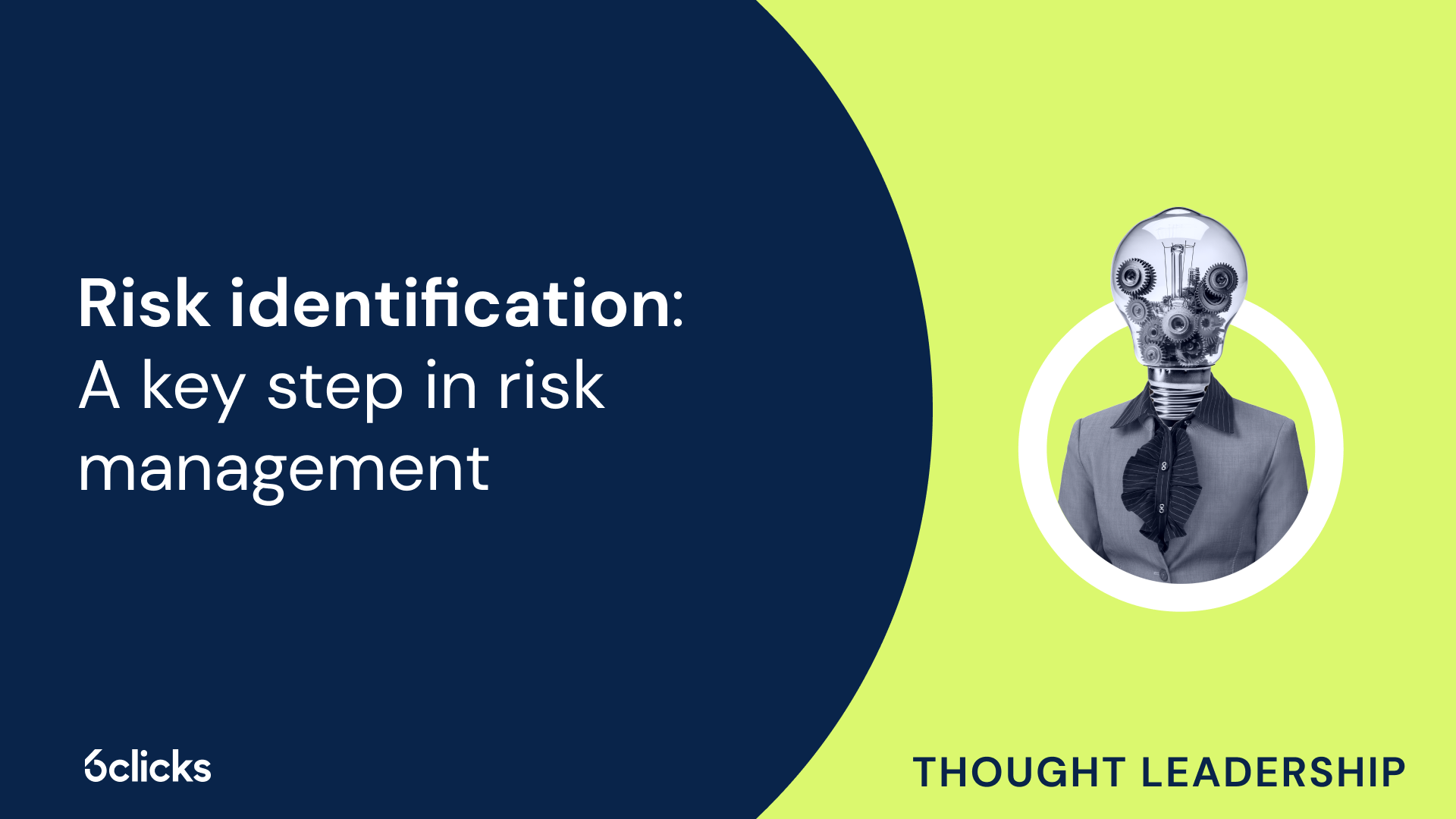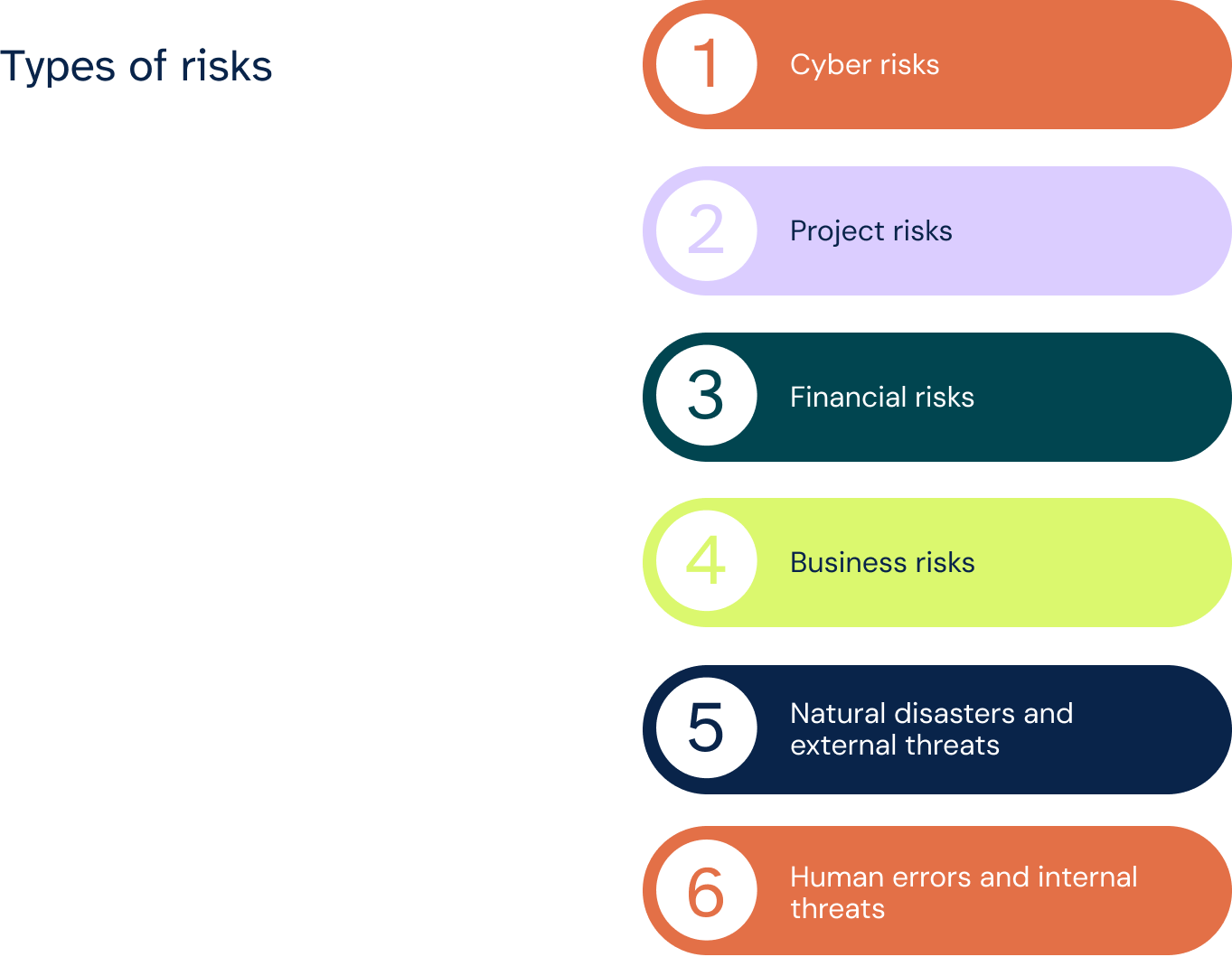
Risk identification helps project managers and organizations identify potential risks that may impact the success of a project or the overall business. By identifying these risks, project managers can develop strategies to mitigate potential impacts and ensure the project or business remains on track.
In this article, we will explore the objectives and steps of effective risk identification, the importance of documenting risk statements in a risk register, as well as the sources and types of risks that organizations may encounter.
We will also discuss the significance of external cross-checks and the need for a comprehensive risk management plan in addressing potential risks to enable successful project outcomes and continued business growth.
Benefits of risk identification
Risk identification is a crucial step in proactive and effective risk management and helps prevent potential risks from adversely affecting business operations and goals.
Through comprehensive risk identification and documentation, businesses gain a comprehensive understanding of potential risks, enabling them to allocate resources effectively and make informed decisions. This process also facilitates effective communication among project teams and stakeholders, ensuring everyone is aware of the risks involved and can collectively work towards minimizing their impact.
Ultimately, the benefits of risk identification lie in its ability to enhance project success rates, protect business operations, and maintain alignment with strategic goals.
The risk identification process
The objective of risk identification is to identify and document all potential risks that could impact a project or business, considering various sources of risk such as financial risk, business risk, cyber risk, legal risk, reputational risk, and natural disasters. Through this process, project managers can assess the level of risk, probability, and potential impacts and then develop a risk register or a list of individual risks for further analysis and evaluation.

The risk identification process typically begins by gathering project documents, such as project charters and cost estimates, and conducting an external cross-check to identify potential threats or common risks. It also involves the following steps:
Brainstorming
A brainstorming session is a valuable tool in the risk identification process that brings together stakeholders from different departments or disciplines to generate creative and innovative ideas on potential risks. This collaborative activity enables the project team to explore a wide range of possibilities and uncover risks that may not have been immediately apparent. Some of the benefits of a brainstorming session include:
- Fostering collaboration and teamwork among project team members
- Encouraging active participation and engagement from all stakeholders
- Creating a sense of ownership and responsibility among team members
Identifying risk sources
In order to effectively manage risks, it is crucial to first understand where these risks come from. This process of identifying risk sources allows organizations to gain insight into the various factors that can contribute to potential risks and enables them to develop appropriate risk mitigation strategies.
Risk sources can originate from both internal and external factors.
- Internal sources - Human errors, inadequate resource allocation, insufficient training, or poor communication within the organization
- External sources - Encompass factors beyond the organization's control, such as natural disasters, economic downturns, or regulatory changes
Within the realm of business operations, numerous potential risks can emerge. These may include supply chain disruptions, technological failures, market volatility, or cyber threats. Recognizing and assessing these risk sources equips organizations with the foresight to proactively address vulnerabilities and develop contingency plans.
By comprehensively identifying risk sources, organizations can ensure a robust risk management process. This knowledge allows them to prioritize resources, establish risk mitigation strategies, and implement effective measures to safeguard against potential threats.
Analyzing and evaluating risks
Analyzing and evaluating risks is an essential step in the risk management process. There are various methods for risk assessment:
- Probability assessment - Conducting a probability assessment involves assessing the likelihood of each identified risk occurring. Probability can be measured using historical data, expert opinions, or statistical models.
- Impact assessment - This involves evaluating the potential consequences or impacts that each risk may have. Factors considered during impact assessment can include financial damage, reputational harm, operational disruptions, or legal consequences.
- Actuarial table - A valuable tool in risk analysis, an actuarial table uses historical data and statistics to estimate the likelihood and potential financial damage of specific risks
Establishing a risk assessment scale is also crucial in evaluating risks. This scale can be based on factors such as likelihood, impact, and severity.
Classifying risks
Risk classification is the process of categorizing identified risks based on their nature, characteristics, or attributes. It involves grouping risks into different types or categories such as financial risks, operational risks, legal risks, and reputational risks to better understand their characteristics and potential impacts. It enables:
- Better understanding of the underlying causes or sources of risks
- Development of targeted risk mitigation strategies
- Enhanced communication and reporting of risks
Prioritizing risks
Prioritizing risks involves evaluating the probability of risks occurring and assessing their potential financial damage. One way to assess the likelihood of risks occurring is by using actuarial tables or historical data. These tables provide insights into the probability of specific risks happening based on past occurrences.
Similarly, assessing the potential financial damage involves analyzing the potential impact a risk can have on the organization's financial stability. This can be done by considering factors such as cost estimates, cost uncertainty, and the potential impacts on revenue, expenses, and investments.
Once the probability and potential financial damage of risks are evaluated, risks can be prioritized based on their likelihood. Risks with a higher likelihood should receive more attention and resources compared to risks with a lower likelihood. By focusing resources on the most significant risks, organizations can effectively manage and mitigate potential threats.
Types of risks to consider
When it comes to risk management, it is essential to consider various types of risks that can impact an organization. Some of the common types of risks that organizations need to take into account include:

Cyber risks
In today's technologically-driven world, organizations face a range of potential risks that could disrupt their operations and compromise sensitive data. Cyber risks, such as power outages, computer failures, and vulnerabilities in cloud storage, pose significant threats to both the security and continuity of businesses.
To safeguard against such risks, it is imperative for organizations to establish robust backup systems for their data, both offline and online. Traditional offline backups, such as tape drives or external hard drives, provide a failsafe in the event of power outages or computer failures. Meanwhile, online backups, particularly through secure cloud storage solutions, offer protection against data breaches and physical disasters.
Risk identification plays a vital role in ensuring that potential technology risks are identified and addressed proactively.
Project risks
Project risks are potential events or circumstances that could have a negative impact on the successful completion of a project. These risks need to be identified and managed to ensure the project's objectives are achieved.
There are several types of project risks that project managers should consider:
- Technical risks, such as issues with hardware or software
- Schedule risks, such as delays in project milestones or deadlines
- Cost risks, such as budget overruns
- Resource risks, such as staffing or skill shortages
- External risks, such as changes in regulations or natural disasters
Each type of risk requires specific mitigation strategies as the potential impact of these risks on a project can vary greatly. Technical risks, for example, could result in system failures or data loss, leading to project delays or customer dissatisfaction.
Financial risks
Financial risks are a crucial consideration for businesses, as they have the potential to significantly impact their operations and overall financial health. Here are the types of financial risks that businesses face:

- Market risk - Refers to potential losses due to changes in market conditions, such as fluctuations in interest rates, exchange rates, or commodity prices which can impact a business's profitability and cash flow. Organizations can closely monitor and manage market risks through appropriate hedging strategies.
- Credit risk - Concerns the possibility of customers defaulting on their payment obligations which can affect the organization's ability to meet financial obligations. Implementing effective credit risk management practices, such as credit assessments and credit insurance, can help mitigate this risk.
- Liquidity risk - The risk of a business being unable to meet its short-term financial commitments. Insufficient cash flow and lack of access to financing can severely impact a company's operations, which is why businesses must maintain adequate liquidity and have contingency plans in place.
- Operational risk - Relates to internal processes, systems, and human factors that can lead to financial losses or disruption of business operations. Strengthening internal controls and implementing operational risk management frameworks are necessary to mitigate these risks.
- Legal and regulatory risk - Refers to the potential financial losses that a business may face due to non-compliance with laws, regulations, or industry standards. Businesses must develop robust compliance programs and regularly monitor legal and regulatory requirements to effectively manage this risk.
Business risks
Business risks encompass a wide range of potential hazards that can pose significant threats to a company's operations, financial stability, and reputation. These risks can vary depending on the nature of the business, industry, and external factors. It is crucial for CEOs and risk management officers to anticipate and prepare for these risks, regardless of the size of their business, to ensure long-term success and sustainability.
Some common types of business risks include financial risks, operational risks, legal and regulatory risks, and reputational risks.
To anticipate and prepare for these risks, businesses should adopt a comprehensive risk management approach that includes risk assessment, risk identification, risk mitigation strategies, and regular monitoring and evaluation of risk mitigation measures. Additionally, engaging with industry experts, conducting scenario planning, and having a clear understanding of the company's risk appetite can further enhance risk management efforts.
Natural disasters and external threats
Natural disasters and external threats present significant risks to businesses, impacting their location and operations. Some common natural disasters include fires, storms, floods, and earthquakes, each with the potential to cause property damage, disrupt supply chains, and jeopardize the safety of employees and customers.
To mitigate these risks, businesses should employ several strategies. Firstly, conducting thorough risk assessments can help identify potential hazards and their impact on the location and operations. This information can inform decisions regarding the establishment or relocation of facilities.
Implementing robust emergency response plans, including evacuation procedures and communication protocols, is crucial. Furthermore, investing in preventive measures, such as fire suppression systems, flood barriers, and earthquake-resistant infrastructure, can reduce the likelihood and severity of damage.
Human errors and internal threats
Human errors and internal threats can significantly impact the success of a project or organization. These risks arise from within the organization and can be caused by individuals or systemic issues. Here are some types of human errors and internal threats:
- Negligence: This occurs when individuals fail to follow established processes or neglect their responsibilities
- Lack of communication: Poor communication within a team or across departments can lead to misunderstandings, missed deadlines, and poor decision-making
- Insider threats: These risks come from individuals within the organization intentionally causing harm through theft of sensitive information, sabotage, or unauthorized access to systems. Insider threats can have severe consequences, such as data breaches or damage to the organization's reputation.
- Inadequate training: When employees are not properly trained, they may lack the necessary skills to perform their tasks effectively. This can lead to errors, rework, and project delays.
Streamline risk management, from identification to mitigation with 6clicks
As managing risks becomes integral to organizations owing to the evolving threat landscape and regulatory requirements, risk identification is a key step in the risk management process. The 6clicks platform empowers organizations by bringing automation and AI into their risk management software. With a full range of features, including risk registers, a vast content library, automated risk assessments, and reporting tools, 6clicks helps in effective risk identification, risk treatment, and risk mitigation.

Know more about how 6clicks helps in streamlining risk management through powerful AI and automation.



